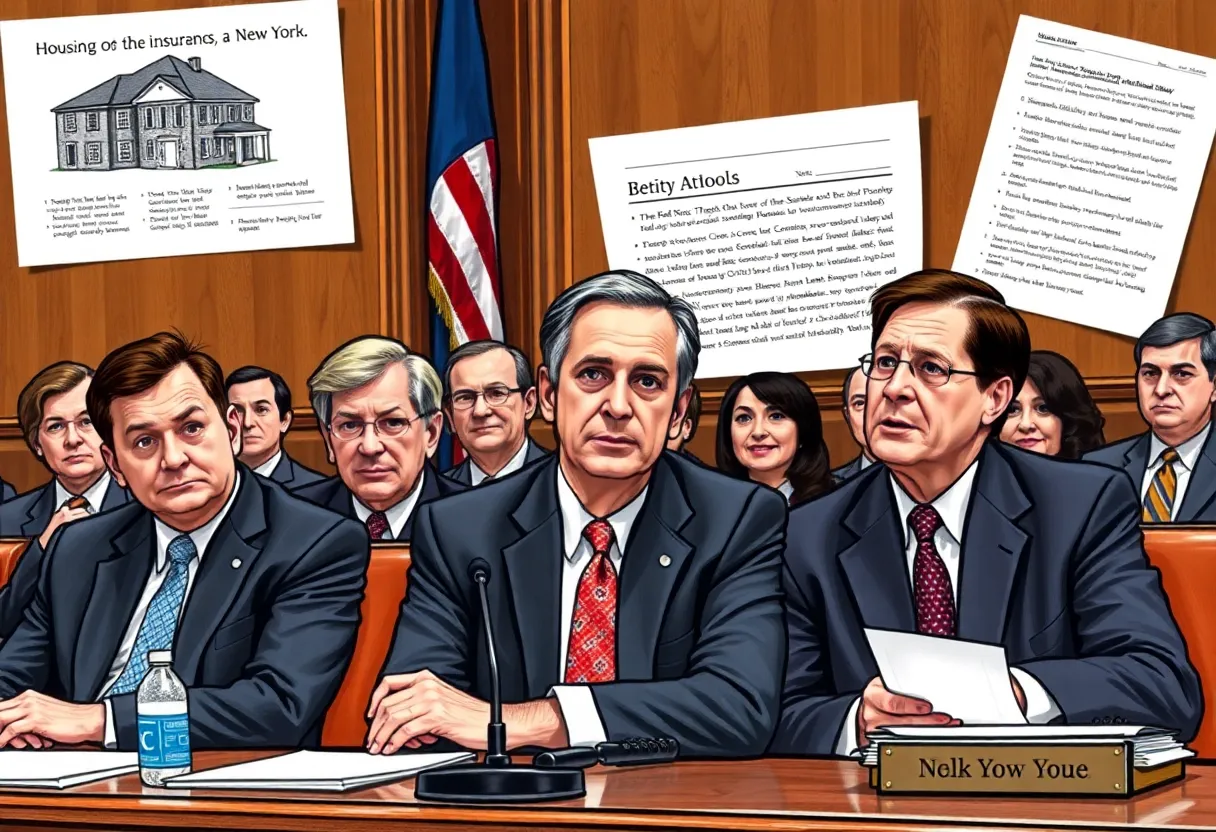News Summary
New York state senators are set to hold a public hearing in mid-November to explore the rising costs of residential insurance affecting property owners and affordable housing development. Chair Brian Kavanagh aims for insurance rates to reflect actual risks. Meanwhile, efforts to increase affordable housing are underway, with plans for 100,000 new units and the establishment of a $50 million relief fund for affected developers. The state faces a critical housing crisis, exacerbated by high insurance premiums and insufficient market transparency.
New York state senators are set to hold a public hearing in mid-November to investigate the rising cost of residential insurance that is impacting property owners and affordable housing development across the state. This inquiry aims to gather data from insurers and regulators statewide, focusing on identifying the factors contributing to increased insurance rates, which include climate change and New York’s transition to renewable energy sources.
Brian Kavanagh, Chair of the state Senate Housing Committee, emphasized that the goal of the hearing is to ensure that insurance companies establish prices based on actual risk factors specific to New York. Following the hearing, senators intend to publish a report that will propose potential legislative solutions to address the issue.
New Yorkers are currently facing challenges in finding affordable housing, exacerbated by federal funding cuts, rising costs, and stagnant wages. This situation is particularly difficult for first-time homebuyers and senior citizens. In response to the growing housing shortage, Ruthanne Visnauskas, the Homes & Community Renewal Commissioner, announced the state’s objective to build 100,000 housing units over the next five years. As part of this initiative, three factory-built starter homes were recently constructed in Schenectady, Syracuse, and Newcomb at a cost of $250,000 each, demonstrating a significant reduction in price compared to traditional homebuilding methods and taking only six months to complete.
The state plans to develop an additional 200 affordable homes targeted at middle- and low-income families in 15 localities, selling them at approximately 80% of the area’s median income. To support this effort, $50 million has been allocated in this year’s budget for housing construction, with intentions to continue financial backing in future budget negotiations.
Alongside these efforts, lawmakers are examining a bill to facilitate rent stabilization for upstate cities, towns, and villages, with a separate public hearing scheduled for October 21. Furthermore, discussions are underway to expand the Rural Preservation Program to improve housing access in counties that lack a nonprofit housing organization. Some rural areas have reported the absence of adequate housing infrastructure and are calling for assistance to address their unique challenges.
Notably, rising insurance costs have emerged as the fastest-growing expense for affordable housing projects, now surpassing even utilities and maintenance. Between 2019 and 2023, the average insurance rate per affordable housing unit in New York City increased by 103%, soaring from $869 to $1,770. In the Bronx, insurance premiums for affordable units have exceeded $3,000 per unit, leading to project delays for numerous developers. Furthermore, homeowners in Bronx County reported an average insurance premium of $2,221 last year, a figure significantly higher than that in other low-risk counties.
The lack of insurance availability has supplied insurers with increased market power, permitting them to raise rates without adequate justification. Renters in New York often allocate roughly 25% of their monthly rent to cover insurance costs, further compounding the issue of overall housing unaffordability. Climate change has been highlighted as a contributing factor to the escalating premiums, although policymakers are calling for enhanced transparency from insurers about risk assessments.
Emérita Torres, a state Assembly member, is working on potential legislation aimed at increasing transparency within the insurance market and safeguarding affordable housing developments. One of her proposals includes creating a task force that would evaluate current insurance market conditions and establish a $50 million Excess Liability Insurance Relief Fund intended to assist affordable housing developers with their insurance costs.
The upcoming public hearing aims to shine a light on these pressing insurance issues and their considerable impact on the housing market in New York, with the potential for legislative changes that could alter the landscape of affordable housing in the state.
Deeper Dive: News & Info About This Topic
- Spectrum Local News
- Wikipedia: Homeowners Insurance
- Insurance Business Magazine
- Google Search: New York insurance rising costs
- The New York Times
- Encyclopedia Britannica: Insurance
- NerdWallet
- Google Scholar: New York insurance rates
- City and State NY
- Google News: New York affordable housing insurance

Author: STAFF HERE NEW YORK WRITER
The NEW YORK STAFF WRITER represents the experienced team at HERENewYork.com, your go-to source for actionable local news and information in New York, the five boroughs, and beyond. Specializing in "news you can use," we cover essential topics like product reviews for personal and business needs, local business directories, politics, real estate trends, neighborhood insights, and state news affecting the area—with deep expertise drawn from years of dedicated reporting and strong community input, including local press releases and business updates. We deliver top reporting on high-value events such as New York Fashion Week, Macy's Thanksgiving Day Parade, and Tribeca Film Festival. Our coverage extends to key organizations like the Greater New York Chamber of Commerce and United Way of New York, plus leading businesses in finance and media that power the local economy such as JPMorgan Chase, Goldman Sachs, and Bloomberg. As part of the broader HERE network, including HEREBuffalo.com, we provide comprehensive, credible insights into New York's dynamic landscape.





